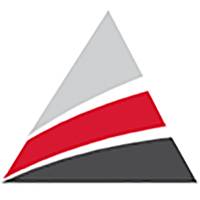- Overview
- Product Parameters
- Our Advantages
- Certifications
- Packaging & Shipping
- FAQ
Basic Info.
Packaging & Delivery
Product Description
Our state-of-the-art containerized Energy Storage System (BESS) stands as the definitive solution for large-scale energy storage projects. These highly adaptable storage containers seamlessly incorporate various advanced storage technologies, making them the ideal choice for a wide range of applications. Experience unmatched reliability and versatility tailored to suit diverse energy needs.
| 500KW PCS AND SOLAR CHARGER | |
| AC380V, 50/60Hz, 10MPPT 400VAC 50/60Hz | |
| Max.PV Input Voltage | 1000V |
| MPPT Voltage Range | 250-850V |
| Max Efficiency 98.1% | |
| IP65, 5 Years Warranty | |
| Size | 1200x720+1600x1050mm |
| Weight | 3265kg |
| 1075KWh Battery Bank |
| 20-foot Container, Battery Cluster |
| 768V/1400AH |
| EMS |
| BMS Three-Level Management System |
| Electrical Equipment |
| Auxiliary System |















A. Are your inverters pure sine wave output?
Q: A Yes, all our inverters provide true pure sine wave output, ensuring high-quality performance.
A: What kind of output you can do?
Q: Normally, we offer inverters with output options of 110V, 115V, 120V, 220V, 230V, and 240V, with 50/60Hz self-adaptation. If you have special requirements, please inform us for engineer consultation.
A: What's the difference between low frequency and high frequency inverter?
Q: Low frequency inverters are equipped with various protections, have strong environmental adaptation, and are more reliable with voltage regulation capabilities.
A: What's the difference between pure sine wave inverter and modified sine wave inverter?
Q: Pure sine wave output inverters offer performance comparable to the public power grid, with lower repair rates, longer lifespans, no harmonic pollution, and enhanced appliance protection.
Modified sine wave output adversely affects appliances, can't handle inductive loads like air conditioners and refrigerators, and may disrupt certain motor control circuits.
A: What appliances your inverters can load?
Q: Our inverters can support household, office, and agricultural appliances, as well as inductive loads such as refrigerators, air conditioners, water pumps, and more.
A: Can you print our company logo on inverters, nameplates and packaging?
Q: Yes, we accommodate OEM orders, personalizing inverters, nameplates, and packaging with your company logo.
A: How to choose a right inverter?
Q: Share your specific requirements and our sales team will recommend the most suitable inverter for your needs.
A: How to solve the technical problem?
Q: We offer 24-hour after-service consultancy to ensure your issues are resolved quickly and efficiently.
A: Do I Need A Power Inverter?
Q: While not absolutely necessary, not having an inverter means you will lack 220 or 230 volts AC and will rely solely on battery power. This might suffice for a small RV or cabin, but most prefer to use standard AC appliances.
A: What's The Difference Between 12, 24, And 48 Volt Inverters?
Q: These numbers refer to the input voltage from the battery bank. Higher voltages mean lower current, allowing for smaller wires between your solar panel array and battery bank. Ensure all components - Solar Panels, Inverter, and Battery Bank - match the same voltage.
A: What to do if the product is broken?
Q: If a product is faulty, send us a picture or video. We will analyze it and provide spare parts or PCB boards for after-sale service free of charge.
